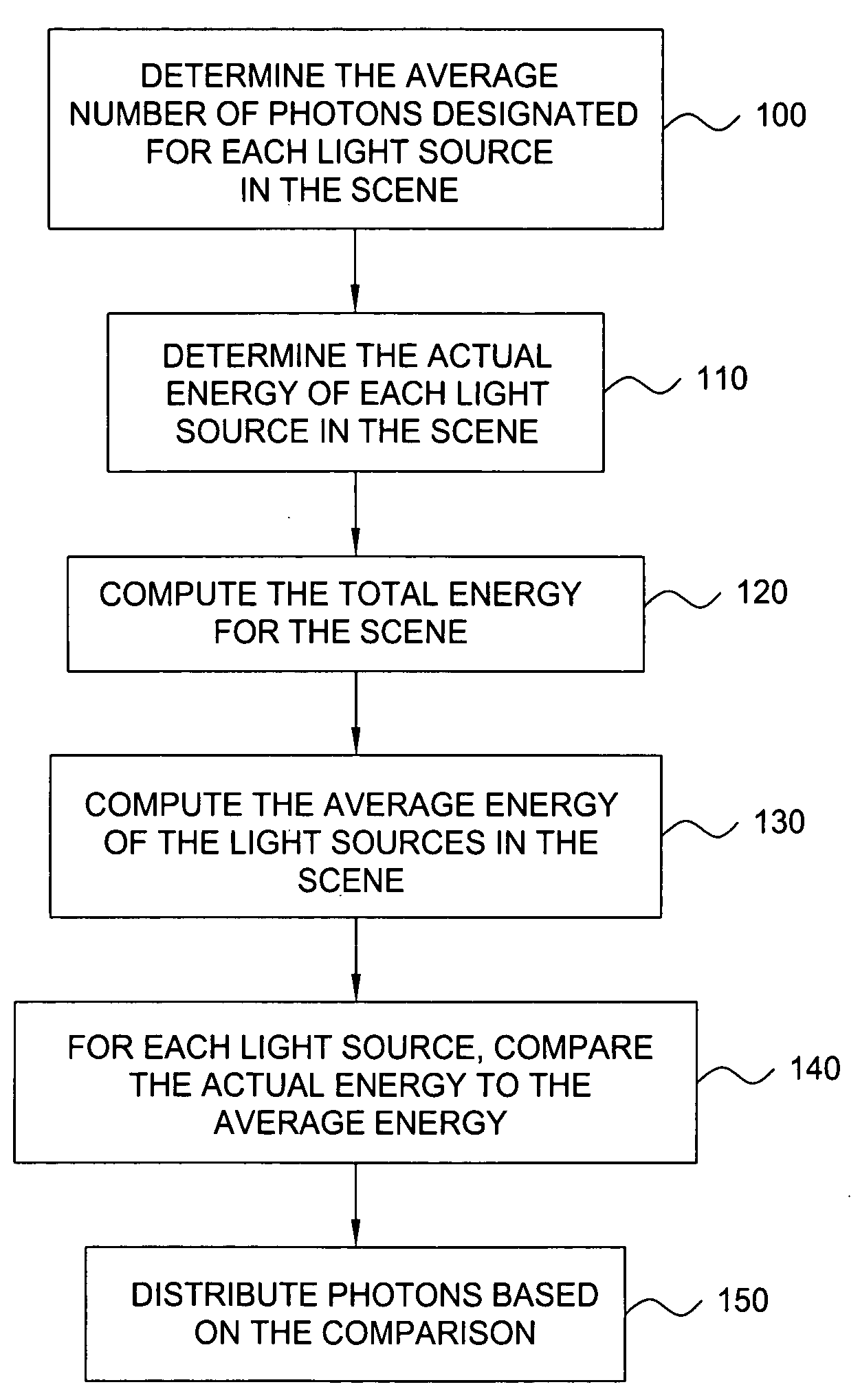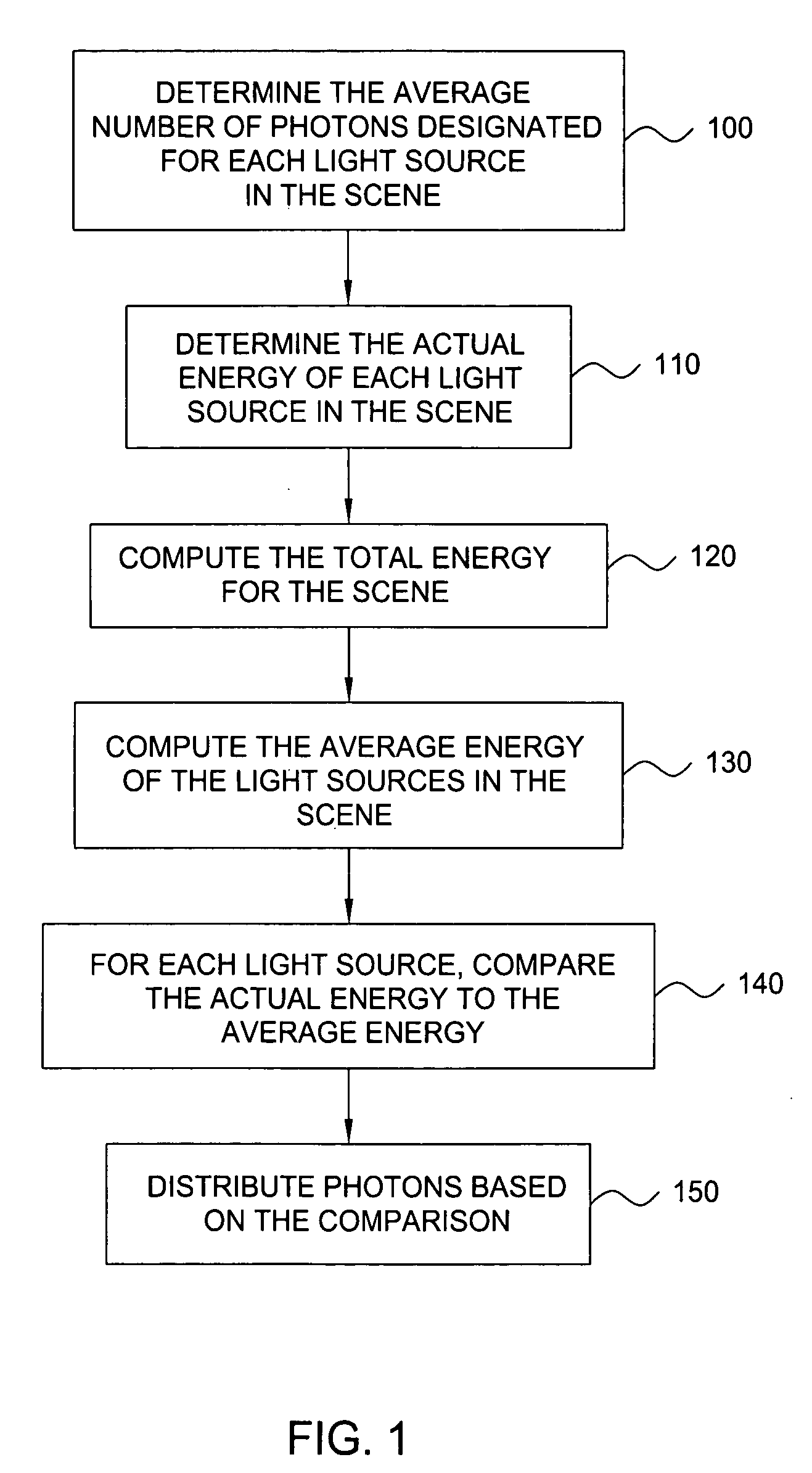System and method for distributing photons when rendering an image using photon mapping
a technology of photon mapping and image, applied in the field of computer graphics, can solve the problems of difficult determination, time-consuming trial-and-error process, and historically impractical implementation of this lighting technique in commercial rendering products, and achieve the effect of improving image quality and overall processing tim
- Summary
- Abstract
- Description
- Claims
- Application Information
AI Technical Summary
Benefits of technology
Problems solved by technology
Method used
Image
Examples
Embodiment Construction
[0014]FIG. 1 is a flow chart of method steps for distributing photons among light sources when rendering an image of a scene using photon mapping, according to one embodiment of the invention. Persons skilled in the art will understand that any system configured to perform the method steps, in any order, is within the scope of the invention.
[0015]As shown in FIG. 1, the method for distributing photons starts in step 100 where a renderer controller (or equivalent functional element) in a rendering application determines the average number of photons to be emitted from each of the light sources in the scene during photon mapping. Typically, the average number of photons per light source is a value designated by a user of the rendering application. For example, the average number of photons may be a number the user inputs directly into the rendering application when rendering an image of the scene. If the user does not supply an average number of photons per light source, a default val...
PUM
 Login to View More
Login to View More Abstract
Description
Claims
Application Information
 Login to View More
Login to View More - R&D
- Intellectual Property
- Life Sciences
- Materials
- Tech Scout
- Unparalleled Data Quality
- Higher Quality Content
- 60% Fewer Hallucinations
Browse by: Latest US Patents, China's latest patents, Technical Efficacy Thesaurus, Application Domain, Technology Topic, Popular Technical Reports.
© 2025 PatSnap. All rights reserved.Legal|Privacy policy|Modern Slavery Act Transparency Statement|Sitemap|About US| Contact US: help@patsnap.com



